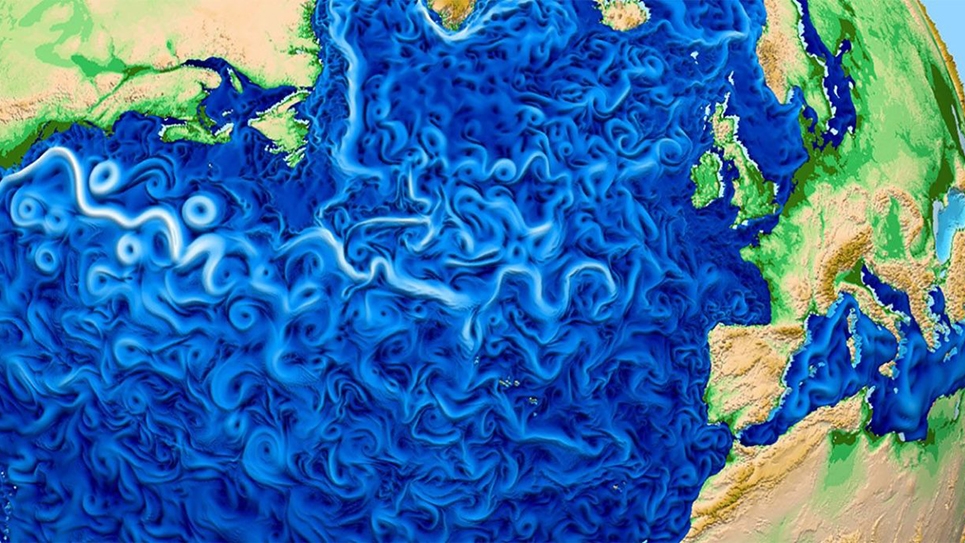
Abyssal Flow Past a Three-Dimensional Hill: Numerical Simulations
Abstract: Wakes of three-dimensional hills in the stratified ocean are sites of enhanced flow variability. Large eddy simulations (LES) of flow past an idealized conical hill with height h and diameter D are undertaken to assess the vortex dynamics. Immersed boundary method is used to model the hill and a Cartesian staggered grid designed to resolve turbulence, is employed. Motivated by the use of slip and drag-law (partial slip) boundary conditions (BC) in literature, the sensitivity of wake to the changing BC is examined. Significant changes occur in the structure of lee vortices. For instance, a no-slip flat boundary inhibits unsteady vortex shedding and delays wake recovery. The sources of lee vorticity are also examined. In addition to boundary layer separation, vorticity added by baroclinic torque is substantial. This reveals that stratification is necessary for formation of coherent lee vortices in geophysical flows.
Abyssal flows in the ocean are tidally modulated. To assess the role of tides on wake vortices, tidal constituents are added to the background flow. Imposition of a tidal oscillation to the mean flow can alter the shedding of vortices so that the wake eddies are found at a frequency which is neither tidal nor the natural shedding frequency. Instead, the wake vortices are found at a frequency coinciding with the subharmonics of the tidal frequency. This phenomenon, known as tidal synchronization, controls the temporal evolution of the wake.
Please use this link to attend the virtual seminar.
https://bluejeans.com/919956974/3036
Meeting ID: 919956974 / Participant passcode: 3036